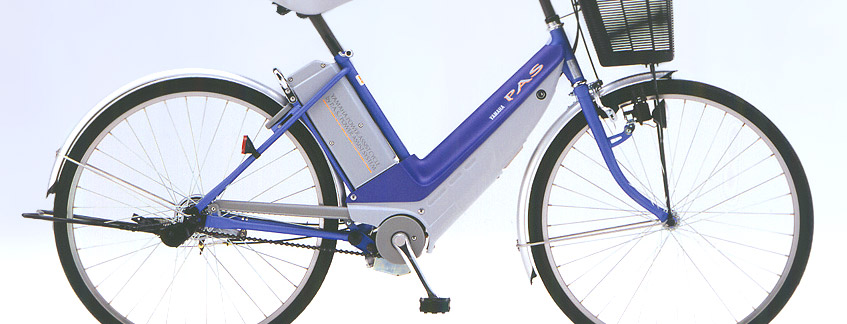From early on, Yamaha had a concept for a hybrid bicycle (combination of manpower and auxiliary power) with power-assist. It would be a new mode of transport closely connected to people's daily lives and would be good for hills and other roads that normal bicycles do not handle well. Research began on bicycles mounted with a compact engine in the 1970s, but it was not until April 1988 that development began on a new approach that would transfer power to the pedals through the combination of batteries and an electric motor. The system allowed the bike to be ridden normally like a conventional bicycle while providing unobtrusive assistance via an electric motor that would supply the appropriate amount of power in accordance with the amount of force being applied to the pedals.
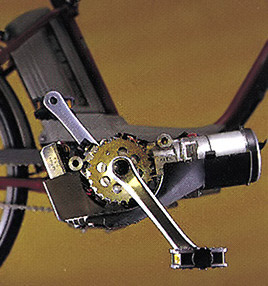
The most important aspect of the system's development was the control mechanism for providing optimal power assistance in line with the pedaling force from the rider. Fortunately, Yamaha was able to develop a mechanism for precisely controlling the rotation of the electric motor thanks to rapidly advancing innovations in the field of electronics. Initially, power-assist control tended to be awkward with an 8-bit CPU, the brains of a microcomputer, but using a 16-bit CPU enabled smooth and responsive control of the rotation. Development progressed steadily, and the name "PAS," for Power Assist System, was decided upon.
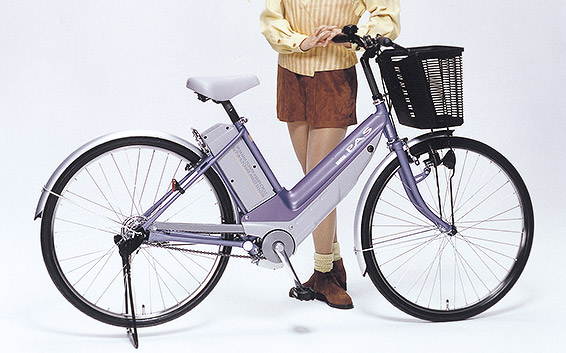
Road and traffic laws were a major issue when it came to commercialization. In order to make the product easily accessible for everyone, it was important that it be considered a bicycle so that riders were not required to have a license or wear a helmet.
Yamaha began making proposals to the Ministry of Transport (present day Ministry of Land, Infrastructure and Transport) and the National Police Agency in August 1990. Because the category of "electro-hybrid bicycle" did not exist at the time, the company explained that its product was an extension of a regular bicycle and that the role of the motor was to assist the rider. The authorities accepted the product's social benefit and public utility, recognizing it as a convenient mode of transport that would save energy, reduce traffic congestion, and cut down on emissions.
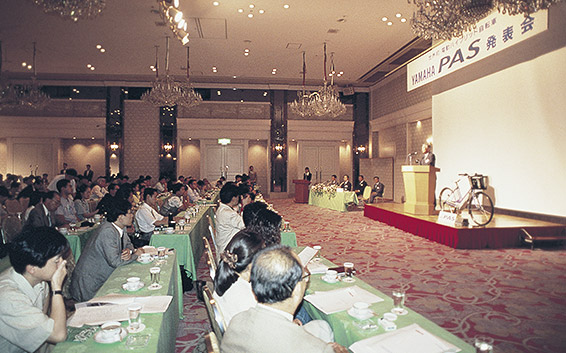
The PAS was announced on July 27, 1993, and promoted as a personal commuter that places utmost priority on human sensibilities and is kind to people and the Earth. Because it was a completely new product, it was necessary to provide dealers with technical training and set up a service system. The market release was handled cautiously. Initially, sales were limited to shops established in Kanagawa, Shizuoka, and Hyogo Prefectures for monitoring beginning November 1, 1993. The number of advance orders, however, exceeded the 1,000 units produced on a limited basis, so the company had to immediately up production to 3,000 units. Test ride events were also held that attracted some 10,000 participants. The surveys conducted there were incorporated into the product and its marketing.
The PAS became a major hit, and production was immediately scaled up from 10,000 units to 30,000 units in fiscal 1994. Other companies entered the segment as well, further spreading the popularity of power-assisted bicycles. By October 1997, cumulative production of the PAS power unit had reached 250,000.
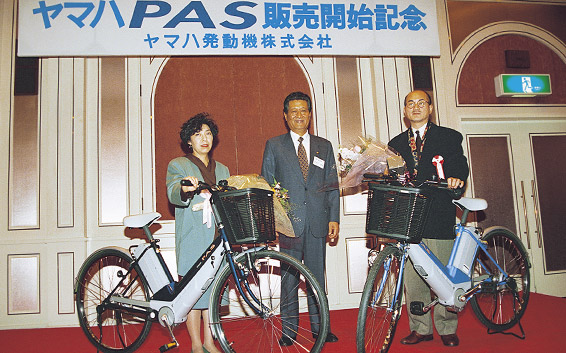
.










